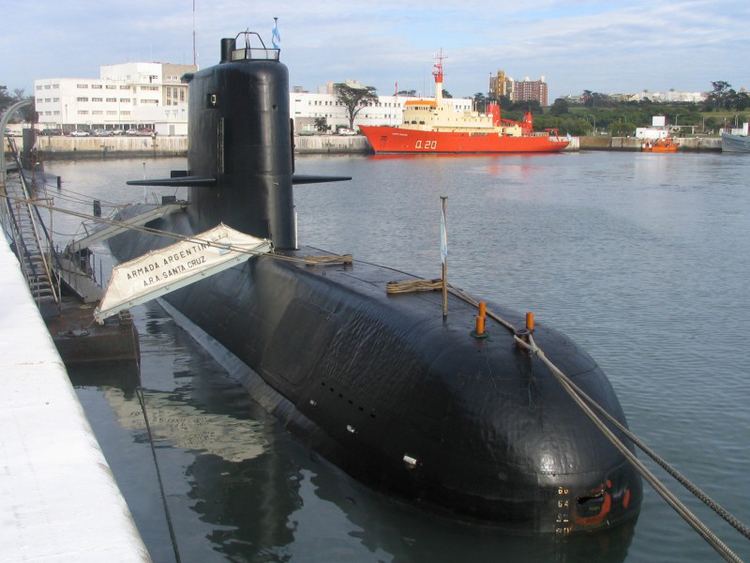Planned 6 Cancelled 2 | In commission 1984-present Completed 2 | |
 | ||
Builders Thyssen Nordseewerke, Emden, Germany | ||
The TR-1700 (Santa Cruz) is a class of diesel-electric patrol submarines built by Thyssen Nordseewerke for the Argentine Navy in the 1980s. These ships are amongst the largest submarines built in Germany since World War II and are among the fastest diesel-electric submarines in the world.
Contents
Development
The original 1977 plan called for six boats, two TR-1700s built in Germany by Thyssen Nordseewerke, two in Argentina by Astillero Domecq Garcia, and two smaller TR-1400s also built in Argentina. The final agreement in 1982 was modified to six TR 1700s.
Design
The submarine was designed by Thyssen and its features include high underwater speed, endurance(for a diesel submarine), and survivability. The boat's four MTU diesel engines, four generators, and Siemens electric motor can propel it at speeds up to 25 knots (46 km/h; 29 mph). Eight 120-cell batteries are installed on each boat. They have a diving depth of 300 m (980 ft). Normal endurance of these boats is 30 days with an extended range up to 70 days. These boats are equipped to accept a Deep Submergence Rescue Vehicle (DSRV). Armaments include six bow 533 mm (21 in) torpedo tubes and 22 SST (Special Surface Target) or Mark 37 torpedo. The automatic torpedo reload system can reload the tubes in 50 seconds.
Thyssen proposed the TR1700A for the Australian Collins-class submarine program. The proposed design had a reworked pressure hull, was six meters longer, and half a meter wider than the TR1700s built for Argentina. It lost to the Type 471 from Kockums, an enlarged Västergötland-class submarine.
Service
The first two submarines were delivered on schedule in 1984-85. The remaining four built in Argentina were suspended due to the Argentinean economic crisis of the 1980s. In 1996 work completely ceased on ARA Santa Fe at 70 percent (or 52 percent) completion while ARA Santiago del Estero was only 30 percent complete. After attempts to complete and sell the boats to other countries (Taiwan) failed they were cannibalized, along with the parts for the fifth and sixth units, to support the continued operations of the first two submarines.
Santa Cruz received its mid-life modernization at Arsenal de Marinha, Rio de Janeiro Brazil between September 1999 and 2001. The work involved the replacement of the engines, batteries, and sonar. Her sister boat San Juan entered the Astillero Domecq Garcia shipyard to receive her refit in 2007 and will receive similar work. San Juan completed refit in 2013.
In September 2010 it was revealed that the Ministry of Defense is conducting feasibility studies to decide if ARA Santa Fe (S-43) should be completed. The decision should be made sometime after completing the mid-life modernization of ARA San Juan (S-42). The estimated cost of completing Santa Fe is $60 million.
